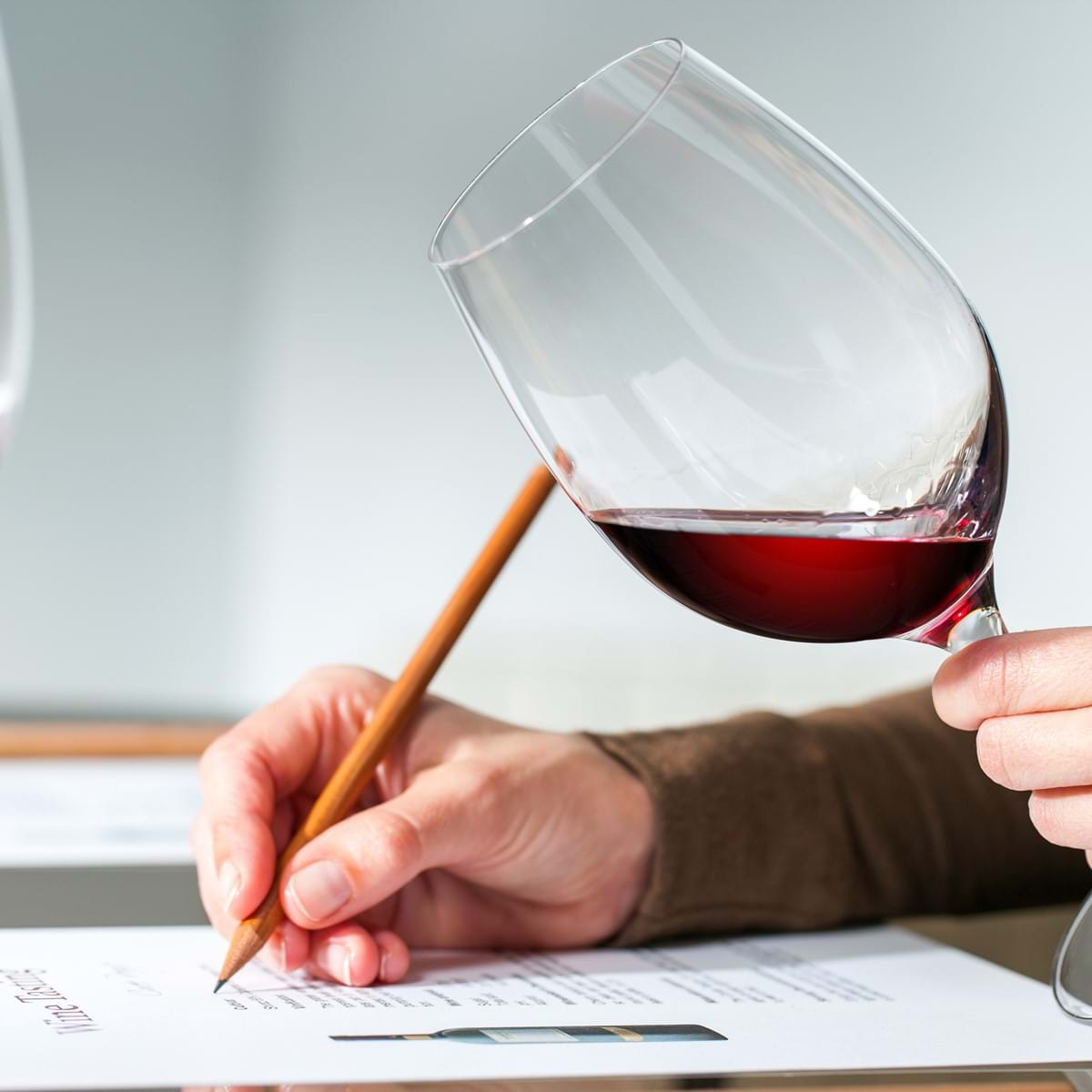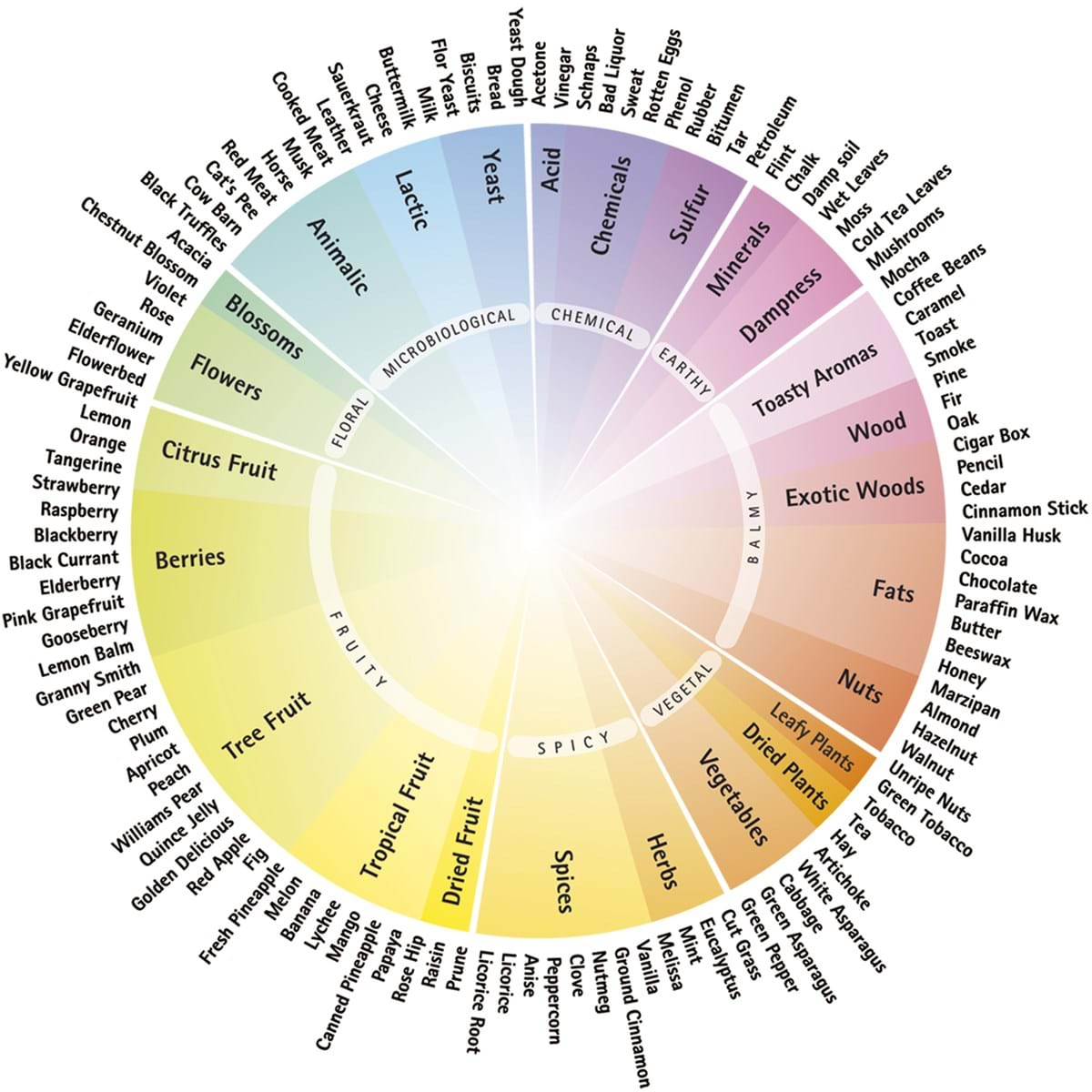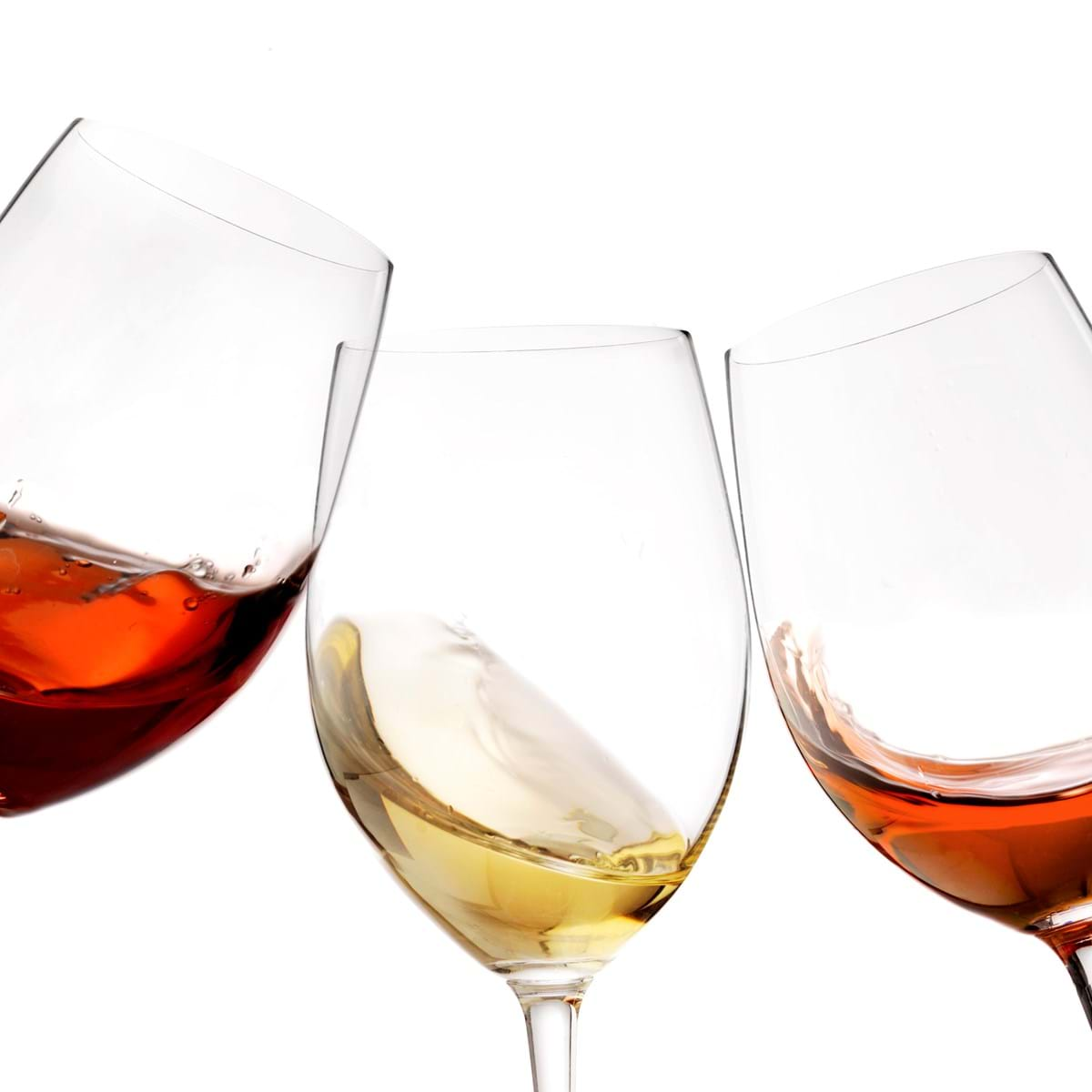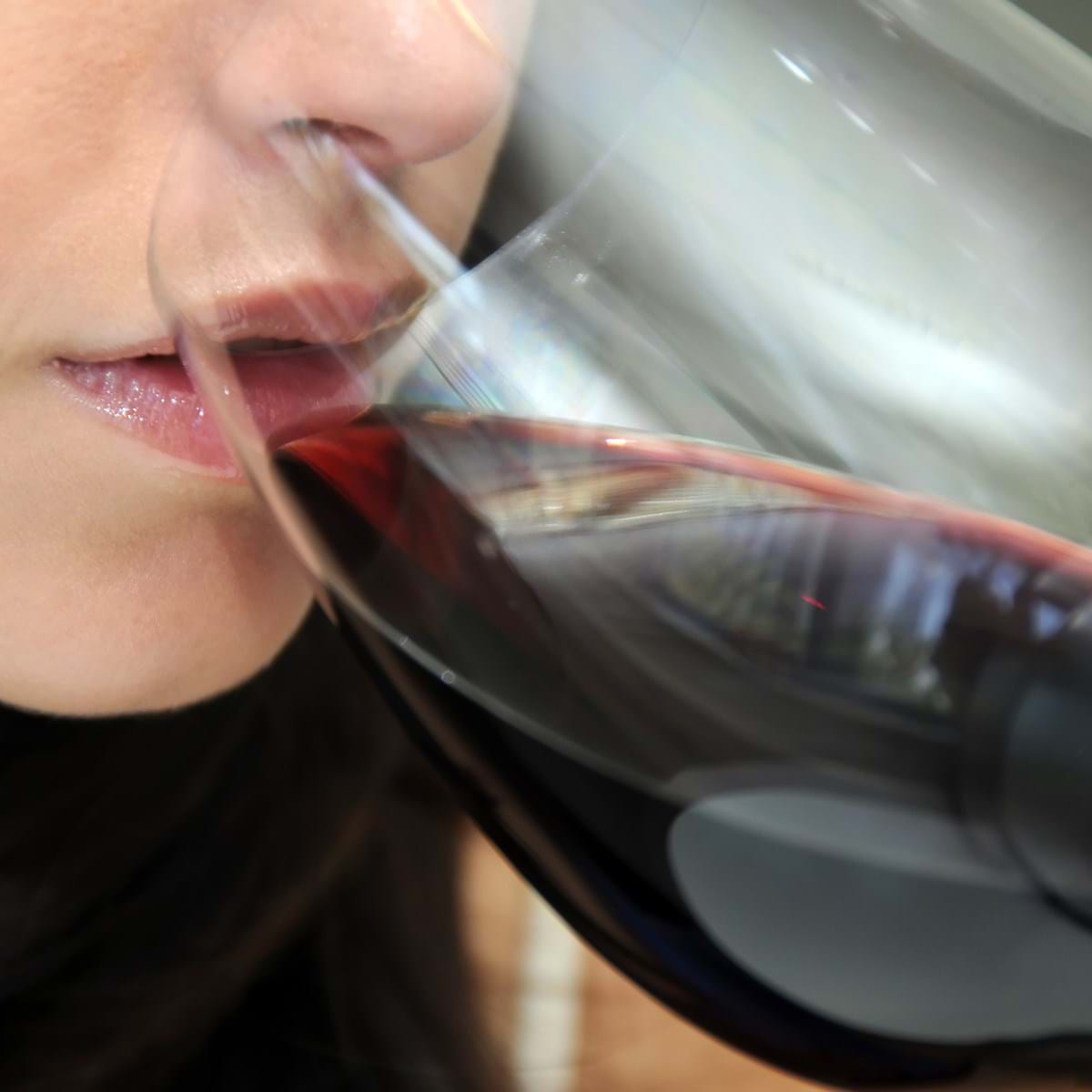Serving, Tasting & Preserving Wine
How to taste wine - The basics » Wine Preservation » Why does glass shape matter? » The Art of Decanting » Caring for your glassware » Wine Faults »Keen to learn more about wine? Read our essential guide on how to taste wine

Look at the wine in the glass
The wine's colour can give you an initial picture of the wine: how old it is, and what the quality of the wine is. A faulty wine, such as one that is oxidised or cooked, will be noticeable through its incorrect colour.
Pour a small amount of wine into a glass, tilt the glass at an angle of 45 degrees away from you and look at it against a plain white background.
To help you identify the colour, take a look at the table of wine colours, or click here to learn about wine faults and how to identify them. In addition to colour, you can also assess:
- Colour Intensity: Faint, Subtle, Light, Medium, Hazy, Dense, Dark, Deep, Opaque
- Clarity: Intransparent, Cloudy, Translucent, Hazy, Slightly, Transparent, Clear, Radiant, Brilliant
- Liveliness: Dead, Lifeless, Dull, Flat, Rich, Active, Vivid, Lively, Vibrant
- Perlage/Carbonic Acid: Stale, Flat, Calm, Beading, Medium Vivid, Tingling, Sparkling, Fizzy, Hissing

Scent of the wine
What you initially perceive from the wine are the most volatile aromas. From your first sniff, you should be able to determine if a wine has an unpleasant smell and is therefore faulty due to oxidation, acetic acid (vinegar) or corkiness.
If you think the wine isn't faulty, take a deep smell and try to work out what you perceive. The Aroma Wheel (left) can help you in identifying the wine’s aromas.
Experiment by varying the distance between your nose and the glass. Notice how the intensity of the aromas increase or decrease as you move the glass closer and further from your nose. Wine aroma is often spoken about as "layered"; doesn't the wine seem more complex when your nose is buried deep in the glass?

Scent of the swirled
Gently swirl the wine in the glass with a rhythmic circular motion of your wrist. If you aren't confident doing this, place the glass's base on a flat surface like your table and, holding near the base, move the glass in a smooth circle to swirl the wine.
Swirling wine releases the less volatile aromas, allowing you to capture the complete picture of the nose of the wine. Take another deep smell; do you perceive any new aromas?

Formal Tasting
Take a sip and keep it in your mouth. Think about the wine’s initial impact (what's your first impression?), mouthfeel (how does it feel in your mouth?) and finish (what's your last impression, how long does it last?).
Here is a good list of criteria to further assess the taste:
- Sweetness: bone-dry, dry, subtle, medium-dry, sweet, heavy, syrupy, honeyed, plump
- Acidity: hollow, thin, refreshing, lively, crisp, vigorous, tart, aggressive
- Tannins: silky, velvety, tender, rounded, fine-grained, raw, hard, coarse
- Astringency: subtle, smooth, mouth-filling, integrated, furry, coating, coarse, harsh, abrasive
- Bitterness: subtle, light, medium, firm, dominant
- Body: hollow, light, lean, round, powerful, muscular, voluptuous, fat, heavy
- Alcoholic Strength: watery, thin, light, balanced, warm, hot, vigorous, intense, spirity
- Consistency: diluted, light, medium, concentrated, rich, heavy, thick, pasty
- Aroma Intensity: faint, delicate, subtle, pronounced, concentrated, intense, exuberant, explosive
- Finish: abrupt, slight, short, medium, expanded, long, lingering, infinite
To intensify the tasting, you can chew the wine to release tannins or suck air through the wine to release sealed aromas. Wine is unique because we both smell and taste aroma, so you can again use the aroma wheel to help label what you taste.
If you are tasting a series of wines, keep in mind that any consumed alcohol will impact your sense of taste. Drink water to neutralize your palate between wines, as eating dry bread or crackers can affect your sense of taste.
Having tasted your wine sample, have a smell of your empty glass. You will find new aroma structures that can provide you with additional information about the wine.
And finally...
At this final stage, the most important thing is the overall impression you have formed during the wine tasting. Assess the wine’s complexity, balance and perceived age.
- Complexity: dumb, dull, simple, straightforward, defined, layered, nuanced, complex, overwhelming
- Balance: poor, unbalanced, incomplete, jagged, one-dimensional, centered, balanced, graceful, harmonious
- Age: fresh, youthful, emergent, mature, advanced, declining, tired, finished, dead
If you're tasting wines with friends, you can make notes, score the wine using a 20 or 100 points scale, and compare your impressions with one another.
- 20 point scale: 20 classic, 19 extraordinary, 18 outstanding, 17 excellent, 16 very good, 15 good, 14 average, 13 bel. average, 12 poor, 11 unacceptable
- 100 point scale: 95 -100 world class, 90 - 94 outstanding, 85 - 89 very good, 80 - 84 good, 75 - 79 average, 70 - 74 below average, 65 - 69 banal, 60 - 64 acceptable, 55 - 59 defective, 50 - 54 unacceptable.
(Article in association with Riedel)


